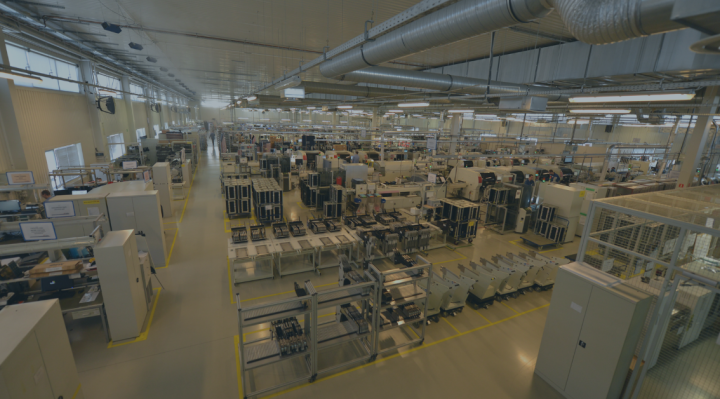The current situation on the components market resulting from a complex geopolitical situation, disruptions in global supply chains, rising transport costs and the aftermath of the COVID-19 pandemic account for material availability problems and force OEMs to choose options that allow them to secure their needs and demand over a much longer period, often as long as 2-3 years, and prevent shortages for their customers.
Sources of supply for contract EMS providers
Electronics manufacturers, including companies providing contract electronics manufacturing, generally use three sources of supply:
Authorised catalogue suppliers
These are authorised sources where materials are usually immediately available.
With them, it is possible to make ad hoc purchases with a delivery period of a few days or, when some materials are not available, to order components with a longer delivery period (indicated by the supplier) of up to several months for the indicated quantities. However, it is not possible to register prices.
It is a good solution for purchases of smaller quantities of materials or ad hoc purchases, especially for generic components. Or maybe we should say it COULD be a good solution, but for a long time demand has far exceeded supply.
Authorised suppliers
These are also authorised sources, used in particular for purchasing more expensive components and integrated circuits (but not only). However, their sales model is primarily oriented towards specific, higher-value orders.
They are also distributors of electronic materials, but they specialise in a different type of sales: they generally possess warehouses, but they use them mainly to store materials for specific customer orders, which are delivered before the collection date. Above all, when working with this type of supplier, an OEM can register prices, which is not possible when working with a catalogue supplier.
With these suppliers there is a specific lead time set by the manufacturer. However, due to the difficulties described above, lead time has got considerably long, and – depending on the so-called linecard – is now about 70-90 weeks for integrated circuits, compared with 20-30 weeks before the pandemic. All this is due to demand far exceeding supply, which means that manufacturers cannot keep up with orders. It in turn means that lead time will get even longer.
Of course, it is also possible to order materials directly from the manufacturer. However, it is the case only with really large orders, which is why this option is used by big players such as Samsung, Sony or Apple.
Broker sources
These are unauthorised sources, i.e. intermediaries or traders who buy and resell materials, usually against an advance payment.
In their case there is no guarantee and the odds are high that their offer will include counterfeit components. However, in today's market situation, due to high demand, components offered by broker sources often reach horrendous prices of up to EUR 100 for a component that used to cost EUR 3-4.
Main risks forcing OEMs to secure their supply chain
The main problem in sourcing materials needed for contract electronics manufacturing is market volatility, which leads to difficulties with component availability and sometimes dramatic price increases.
Apart from availability problems OEMs face:
- Increasing transport prices due to rising fuel prices, disrupted supply chains and a complicated geopolitical situation.
- Border closures related to the slow recovery of some countries from the pandemic and China's Zero COVID policy, which has frozen the global economy and is largely responsible for delays in order fulfilment.
- Power outages in China and associated downtime for Chinese electronic component manufacturers.
- Regulatory changes as a result of a tense geopolitical situation, as well as post-pandemic caution of many countries, which are constantly imposing, for example, quarantine of materials, which again can greatly delay deliveries.
Minimising risks associated with supply chain problems
In a situation of generally unstable markets and supply chains, it is important to rely on stable, experienced partners to secure timely deliveries.
Therefore, it is advisable to choose contract EMS providers for electronics assembly who not only know how to deal with difficult, crisis situations, but also have systems that are adapted to work under different conditions, and are well-organised. Such EMS providers also have access to a larger network of suppliers, including established brokers, and have a good orientation in the market situation.
Moreover, cooperation with a larger, financially stable EMS company that is able to minimise financial shocks can help secure the OEM's material supply chains.
Especially since the COVID-19 pandemic has shown clearly that suppliers simply need to be financially stable, due to the lower risk of payment problems and bankruptcy. This means that a solid contract EMS provider will not suddenly close down its plants, leaving its customers with unfulfilled contracts and without the products on which their liquidity depends.
Moving production closer to the end market is also important. It not only facilitates communication between OEM and EMS thanks to the lack of time difference between countries/continents, but also avoids customs duties and high transport costs and simplifies crisis management.
Alternatively, one could consider outsourcing electronics assembly to two independent electronics manufacturing service providers on behalf of the EMS, i.e. dual sourcing, and thus secure itself against possible risks. However, this option is available to larger companies with the right financial backing and a significant production volume, rather than start-ups or small operators.
It is also important to secure material ahead of lead time, especially for components with extended lead times and those which are hard to find (even 2-3 years are required), i.e. placing orders well in advance, as most distributors operate according to the order queuing principle, especially for allocated products. It is especially true for allocation of materials by a manufacturer, which is now commonplace (again due to demand far exceeding supply), as the place in the queue may turn out to be extremely important.
Conclusion
For both OEMs and EMS providers, the risk of supply chain disruption is a real threat, particularly recently. Therefore, from the point of view of ensuring adequate levels of productivity, reliability and timely delivery, the extent to which OEMs are able to plan ahead for their demand or, at least, secure critical electronic components is crucial.
That is why it is so important to have a good working relationship with a trusted EMS company, which allows you to put a wide range of demanding responsibilities into the hands of an experienced partner and give them more freedom to deal with the volatile market. Therefore, when deciding to work with a contract EMS provider, it is important to choose experienced and committed companies, as only they can guarantee delivery of high-quality products within an agreed timeframe.






